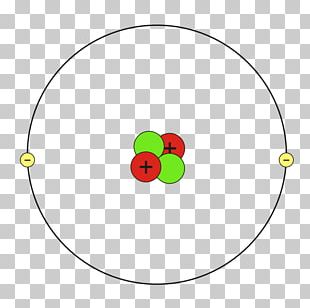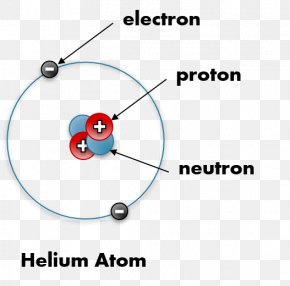Helium is a colorless, odorless, tasteless chemical element, one of the noble gases of the periodic table of elements. Its boiling and melting points are the lowest among the elements; except in extreme conditions, it exists only as a gas. The second most abundant element in the universe, significant amounts are found on Earth only in natural gas. It is used in cryogenics, in deep-sea breathing systems, for inflating balloons, and as a protective gas for many purposes. Helium is not toxic and has no biological effect.
| |||||||||||||||||||||||||
| General | |||||||||||||||||||||||||
|---|---|---|---|---|---|---|---|---|---|---|---|---|---|---|---|---|---|---|---|---|---|---|---|---|---|
| Name, Symbol, Number | Helium, He, 2 | ||||||||||||||||||||||||
| Atomic weight | 4.002602 | ||||||||||||||||||||||||
| Chemical series | Noble gases | ||||||||||||||||||||||||
| Group, Period, Block | 18 (VIIIA), 1, p | ||||||||||||||||||||||||
| Density (0°C, 1 atm) | 0.179 g/L | ||||||||||||||||||||||||
| Appearance | colorless | ||||||||||||||||||||||||
| Thermal data | |||||||||||||||||||||||||
| Melting point (at 26 atm) | 0.95 K (-272.2°C) | ||||||||||||||||||||||||
| Boiling point | 4.22 K (-268.93°C) | ||||||||||||||||||||||||
| Specific heat capacity | 5193 J/(kg*K)]] | ||||||||||||||||||||||||
| Thermal conductivity | 0.152 W/(m*K)]] | ||||||||||||||||||||||||
| Heat of vaporization | 0.0845 kJ/mol | ||||||||||||||||||||||||
| Heat of fusion | 5230 J/mol | ||||||||||||||||||||||||
| Electronic data | |||||||||||||||||||||||||
| Electron configuration | 1s2 | ||||||||||||||||||||||||
| Electrons per shell | 2 | ||||||||||||||||||||||||
| Valence | 0 | ||||||||||||||||||||||||
| 1st ionization potential | 2372.3 kJ/mol | ||||||||||||||||||||||||
| 2nd ionization potential | 5250.5 kJ/mol | ||||||||||||||||||||||||
| Steric data | |||||||||||||||||||||||||
| Covalent radius | 32 pm | ||||||||||||||||||||||||
| van der Waals radius | 140 pm | ||||||||||||||||||||||||
| Molar volume | 21.0 ×10-6 m3/mol | ||||||||||||||||||||||||
| Crystal structure | hexagonal | ||||||||||||||||||||||||
| Isotopes | |||||||||||||||||||||||||
| |||||||||||||||||||||||||
| All conditions STP except where noted. | |||||||||||||||||||||||||
Solving the Helium Atom Or: Why does Chemistry Exist? Matthew Reed Math 164 – Scientific Computing May 4, 2007 1. Motivation One of the first real-world calculations demonstrated in any introductory quantum mechanics class is the hydrogen atom. It is surprisingly straightforward to find the ground state. #the4pillars #the4pillarseducation #the4pillarsmodelsAtom Model 3D science project Hlium atom model How to make atom model easy method atom model Follo.
History
Helium was first detected in 1868 as a bright yellow line in the spectrum of the chromosphere of the Sun, by French astronomer Pierre Janssen during a solar eclipse in India. The same year, English astronomer Norman Lockyer also observed a previously unknown yellow line in the solar spectrum and concluded that it was caused by an element unknown on Earth. He and English chemist Edward Frankland named the element with the Greek word for the Sun, helios. In 1895, British chemist William Ramsay isolated helium on Earth by treating cleveite with mineral acids. These samples were identified as helium by Lockyer and British physicist William Crookes. It was independently isolated from cleveite the same year by Swedish chemists Per Teodor Cleve and Nils Langlet.
In 1905, American chemists Hamilton Cady and David McFarland discovered that helium could be extracted from natural gas. In 1907, Ernest Rutherford and Thomas Royds demonstrated that an alpha particle is a helium nucleus. Helium was first liquefied by Dutch physicist Heike Kamerlingh Onnes in 1908 by cooling the gas to less than one kelvin. It was first solidified in 1926 by his student Willem Hendrik Keesom. In 1938, Russian physicist Pyotr Leonidovich Kapitsa discovered that helium-4 has almost no viscosity at temperatures near absolute zero, a phenomenon now called superfluidity. In 1972, the same phenomenon was observed in helium-3 by American physicists Douglas D. Osheroff, David M. Lee, and Robert C. Richardson.
Under standard temperature and pressure, helium exists only as a monatomic gas. It solidifies only under great pressure, the variation of which can drastically change the volume of the solid. Below its boiling point of 4.21 kelvin and above the lambda point 2.1768 kelvin, the isotope helium-4 exists in a normal liquid state, called helium I. Below the lambda point, it begins toexhibit unusual characteristics, in a state called helium II. Less is known about such properties in the isotope helium-3.
Helium II
Helium II exhibits characteristics of two distinct fluids, one a normal, viscous liquid and the other a superfluid apparently without internal friction. It has a mobile, rapid flow through even the smallest of capillaries and, in the fountain effect, can rise over the rim of a containment vessel in a thin film that appears unaffected by gravity. In addition, its thermal conductivity is greater than that of any other known substance. When introduced, heat will rapidly propagate through the substance in waves, a phenomenon called second sound. Cakewalk free download mac.

Helium Atomic Symbol
Reactions
Helium is chemically unreactive under all normal conditions. With electric glow discharge or electron bombardment, however, helium can form compounds with tungsten, iodine, fluorine, sulfur and phosphorus.
Isotopes

Although there are six known isotopes of helium, only helium-3 and helium-4 are stable. The others, radioactive, rapidly decay into other substances. The most common isotope, helium-4, is produced by alpha decay from heavier radioactive elements; its nucleus is an alpha particle. It is an unusually stable nucleus because its nucleons are arranged into complete shells. There is only a trace amount of helium-3 on Earth, produced from the beta decay of tritium.
Abundance
Helium Atom Diagram
Helium is the second most abundant element in the known universe after hydrogen and constitutes nearly a quarter of the mass of the universe. It is concentrated in the stars, where it is formed from hydrogen by the nuclear fusion of the proton-proton chain reaction and CNO cycle. According to the Big Bang model of the early development of the universe, the vast majority of helium was formed in the first three minutes after the Big Bang.
However, the concentration of helium in the Earth's atmosphere is only 1 part in 200,000, largely because most helium in the Earth's atmosphere escapes into space due to its inertness and low mass. All considerable helium on Earth is a result of radioactive decay. The decay product is found in minerals of uranium and thorium, including cleveites, pitchblende, carnotite, monazite and beryl. There are also small amounts in mineral springs, volcanic gas, meteoric iron. The greatest concentrations on the planet are in natural gas, from which most commercial helium is derived. The principal source in the world is the natural gas wells of the American states of Texas, Oklahoma, and Kansas.
Synthesis
Helium can be synthesized by bombardment of lithium or boron with high-velocity protons.
Uses
Pressurized helium is commercially available, extracted from natural gas.
Helium is used for many purposes:

Helium Atom Nucleus
- Because it is lighter than air, airships and balloons are inflated with helium for lift. Helium is advantageous in airships because it is not flammable and has 92.64% of the lifting power of the alternative hydrogen.
- The voice of a person who has inhaled helium becomes temporarily high-pitched, because the speed of sound in helium is nearly thrice that in air, with a corresponding increase in the resonant frequencies of the larynx. Although this is a novel amusement, it can be lethally dangerous with concentrated helium.
- Trimix, an atmosphere of helium, oxygen, and nitrogen, is used in deep-sea breathing systems to reduce the risk of nitrogen narcosis and oxygen toxicity at high pressures.
- Because of its extremely low melting and boiling points, helium is used as a coolant in magnetic resonance imaging, nuclear reactors, superconducting magnets, and cryogenics.
- Because it is inert, helium is used as a protective gas in growing silicon and germanium crystals, in titanium and zirconium production, in arc welding, and in gas chromatography.
- Helium used to pressurize liquid fuel rockets.
- Helium is used in supersonic wind tunnels.
- The gain medium of the helium-neon laser is a mixture of helium and neon.
Helium Wavefunction

External links
- WebElements: Helium(http://www.webelements.com/webelements/elements/text/He/key.html)
- EnvironmentalChemistry.com – Helium(http://environmentalchemistry.com/yogi/periodic/He.html)
- It's Elemental – Helium(http://education.jlab.org/itselemental/ele002.html)
- Hoax: Helium Causes Death (CIAC Hoaxbusters)(http://hoaxbusters.ciac.org/HBUrbanMyths.shtml#helium)
